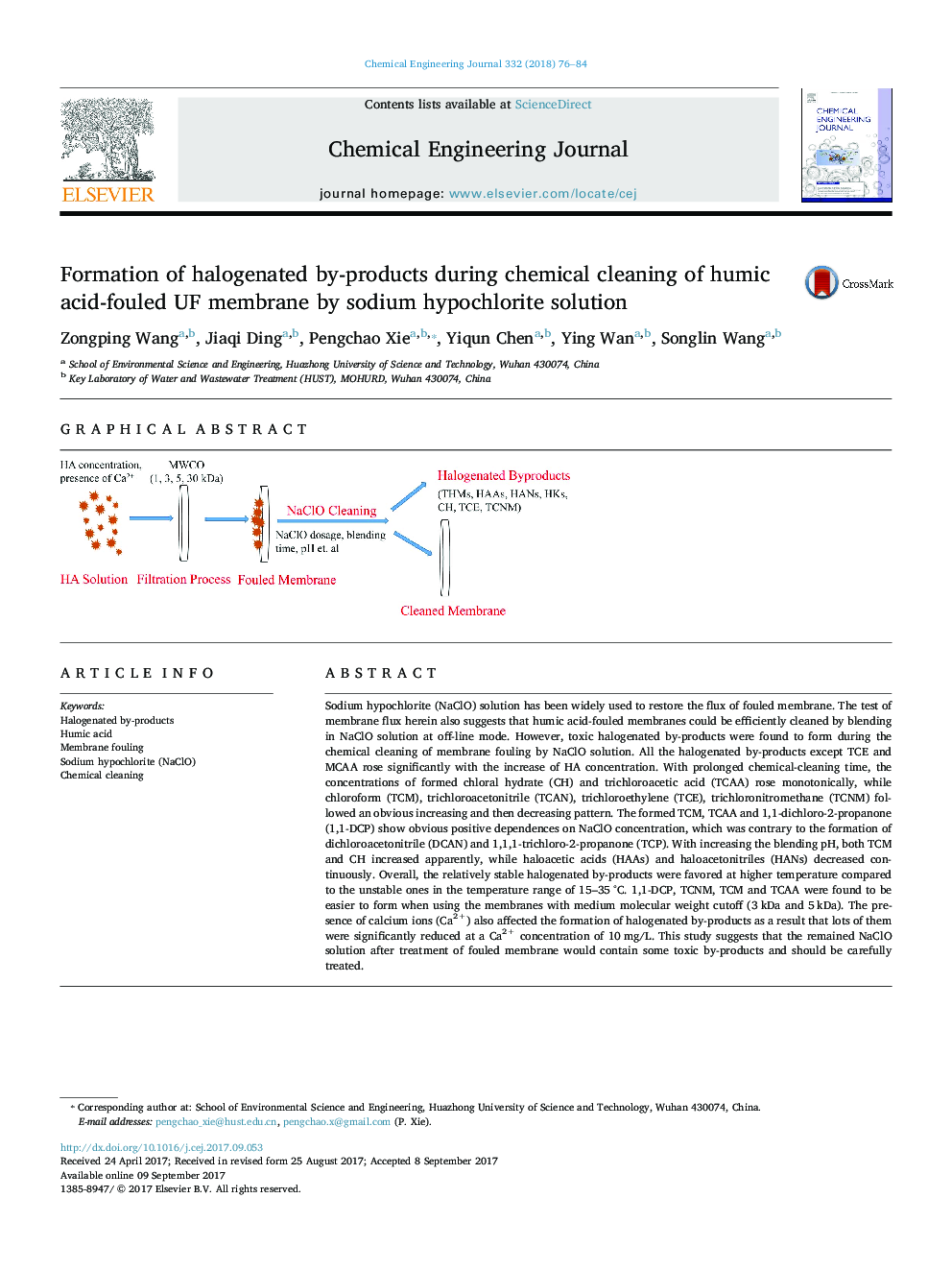| کد مقاله | کد نشریه | سال انتشار | مقاله انگلیسی | نسخه تمام متن |
|---|---|---|---|---|
| 6464854 | 1422946 | 2018 | 9 صفحه PDF | دانلود رایگان |

- NaClO solution was efficiently used to remove organic foulants on membrane.
- Halogenated by-products formed during NaClO cleaning of HA-fouled membrane.
- Impacts of some cleaning conditions on byproduct formation were evaluated.
- HA concentration and Ca2+ in feed water affect byproduct formation.
Sodium hypochlorite (NaClO) solution has been widely used to restore the flux of fouled membrane. The test of membrane flux herein also suggests that humic acid-fouled membranes could be efficiently cleaned by blending in NaClO solution at off-line mode. However, toxic halogenated by-products were found to form during the chemical cleaning of membrane fouling by NaClO solution. All the halogenated by-products except TCE and MCAA rose significantly with the increase of HA concentration. With prolonged chemical-cleaning time, the concentrations of formed chloral hydrate (CH) and trichloroacetic acid (TCAA) rose monotonically, while chloroform (TCM), trichloroacetonitrile (TCAN), trichloroethylene (TCE), trichloronitromethane (TCNM) followed an obvious increasing and then decreasing pattern. The formed TCM, TCAA and 1,1-dichloro-2-propanone (1,1-DCP) show obvious positive dependences on NaClO concentration, which was contrary to the formation of dichloroacetonitrile (DCAN) and 1,1,1-trichloro-2-propanone (TCP). With increasing the blending pH, both TCM and CH increased apparently, while haloacetic acids (HAAs) and haloacetonitriles (HANs) decreased continuously. Overall, the relatively stable halogenated by-products were favored at higher temperature compared to the unstable ones in the temperature range of 15-35 °C. 1,1-DCP, TCNM, TCM and TCAA were found to be easier to form when using the membranes with medium molecular weight cutoff (3 kDa and 5 kDa). The presence of calcium ions (Ca2+) also affected the formation of halogenated by-products as a result that lots of them were significantly reduced at a Ca2+ concentration of 10 mg/L. This study suggests that the remained NaClO solution after treatment of fouled membrane would contain some toxic by-products and should be carefully treated.
154
Journal: Chemical Engineering Journal - Volume 332, 15 January 2018, Pages 76-84